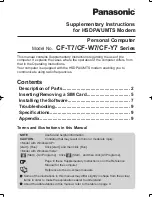
13
Version 1, 21 August 2019, 13 of 21
1. After checking that supply conditions are within the specified parameters (see table 1), if the fitting
malfunctions or should the test results fail to fall within the specified limits consider replacing the cartridge
with a new one. See 10.3 Important notes on debris.
2. Isolate the fitting by turning the isolating valves 90° anti-clockwise (viewed facing the isolation valve).
3. Remove the cover as described in 10.1. Unscrew the cartridge from the body with a 36mm AF deep socket.
Inspect cartridge for damage.
4. Replace cartridge if necessary and reassemble cartridge into body. The replacement cartridge should be
tightened to a torque of 15Nm.
5. Set the temperature as per steps 4-5 in section 10.1.
6. After fitting the new cartridge start the test procedure from the section 7.0 on commissioning. Record the mix
temperature.
10.3 Important notes on debris
Although this product is protected by built-in filters, debris can still find its way to the thermostat housing area.
This can happen during servicing for example. Remove cartridge (see section 10.2) and carry out an inspection.
10.4 Maintenance cleaning
On a regular basis the anti-splash nozzle should be inspected and cleaned if necessary. This should be done
immediately before sterilising is carried out.
In areas where lime scale build-up is prevalent this will have to be removed. An inhibited proprietary scale
solvent can e used such a kettle descaling solvent, ut it is important to follow the manufacturer’s guidelines.
After descaling it is important to rinse the parts thoroughly in clean water. Clean carefully and do not use
abrasive materials or scrapers.







































